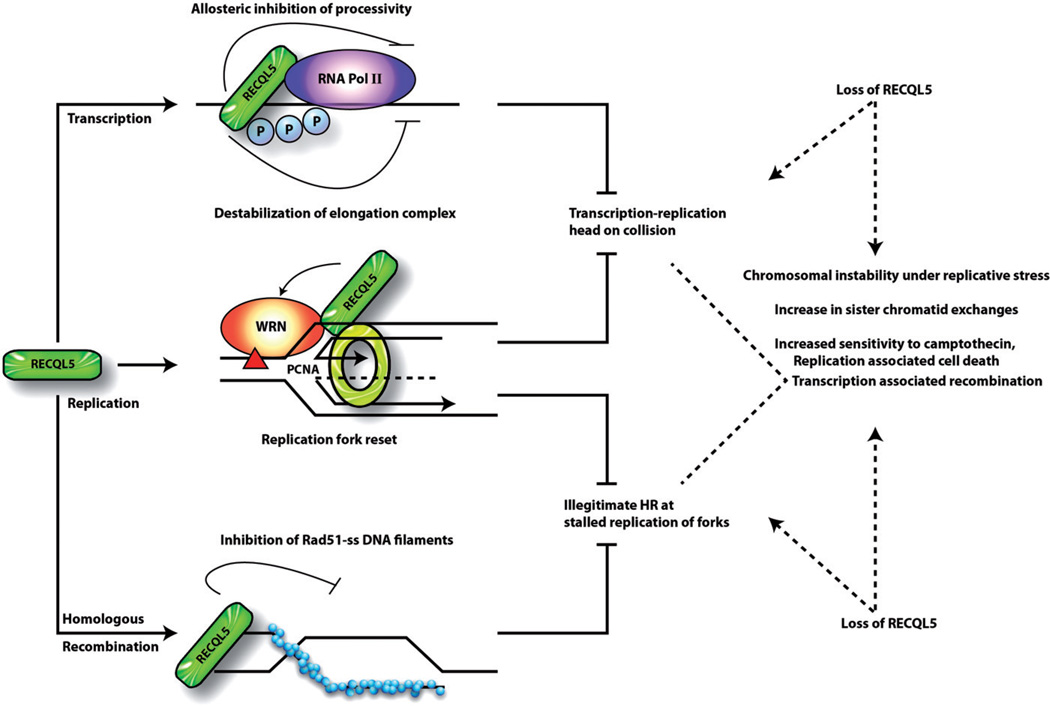Figure 2.
Human RECQL5 at the intersection of DNA replication, transcription and recombination. RECQL5 inhibits transcription elongation by interaction with the hyperphosphorylated form of RNA Pol II. RECQL5 promotes strand exchange at stalled replication forks. Collision of a replication fork with the transcription machinery might result in stalled/collapsed replication forks. Alternatively, if a fork encounters a blocking lesion (red triangle) in the leading-strand template, the fork might regress and the nascent DNA strands might anneal to form a four-way junction. Replication past the lesion might be facilitated by the strand exchange and uncoupling of leading- and lagging-strand synthesis. The leading strand could be extended using the longer lagging strand as a template. We speculate that the interactions of RECQL5 with WRN and PCNA at these stalled replication forks might then reset the fork and the leading strand would now be able to extend beyond the lesion. RECQL5 acts as an anti-recombination factor by inhibiting RAD51 nucleo-protein filaments. Transcription associated recombination might also occur when transcription machinery collides with a replication fork as an alternative for fork-reset. Loss of RECQL5 might result in collision of transcription and replication machinery that would result in stalled/collapsed replication forks and eventual elevation of recombination events, (see colour version of this figure at www.informahealthcare.com/bmg).

